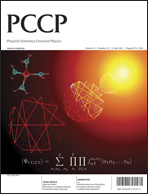Although messenger mediated spectroscopy is a widely-used technique to study gas phase ionic species, effects of messengers themselves are not necessarily clear. In this study, we report infrared photodissociation spectroscopy of H+(H2O)6·Mm (M = Ne, Ar, Kr, Xe, H2, N2, and CH4) in the OH stretch region to investigate messenger(M)-dependent cluster structures of the H+(H2O)6 moiety. The H+(H2O)6, the protonated water hexamer, is the smallest system in which both the H3O+ (Eigen) and H5O2+ (Zundel) hydrated proton motifs coexist. All the spectra show narrower band widths reflecting reduced internal energy (lower vibrational temperature) in comparison with bare H+(H2O)6. The Xe-, CH4-, and N2-mediated spectra show additional band features due to the relatively strong perturbation of the messenger. The observed band patterns in the Ar-, Kr-, Xe-, N2-, and CH4-mediated spectra are attributed mainly to the “Zundel” type isomer, which is more stable. On the other hand, the Ne- and H2-mediated spectra are accounted for by a mixture of the “Eigen” and “Zundel” types, like that of bare H+(H2O)6. These results suggest that a messenger sometimes imposes unexpected isomer-selectivity even though it has been thought to be inert. Plausible origins of the isomer-selectivity are also discussed.


 Please wait while we load your content...
Please wait while we load your content...